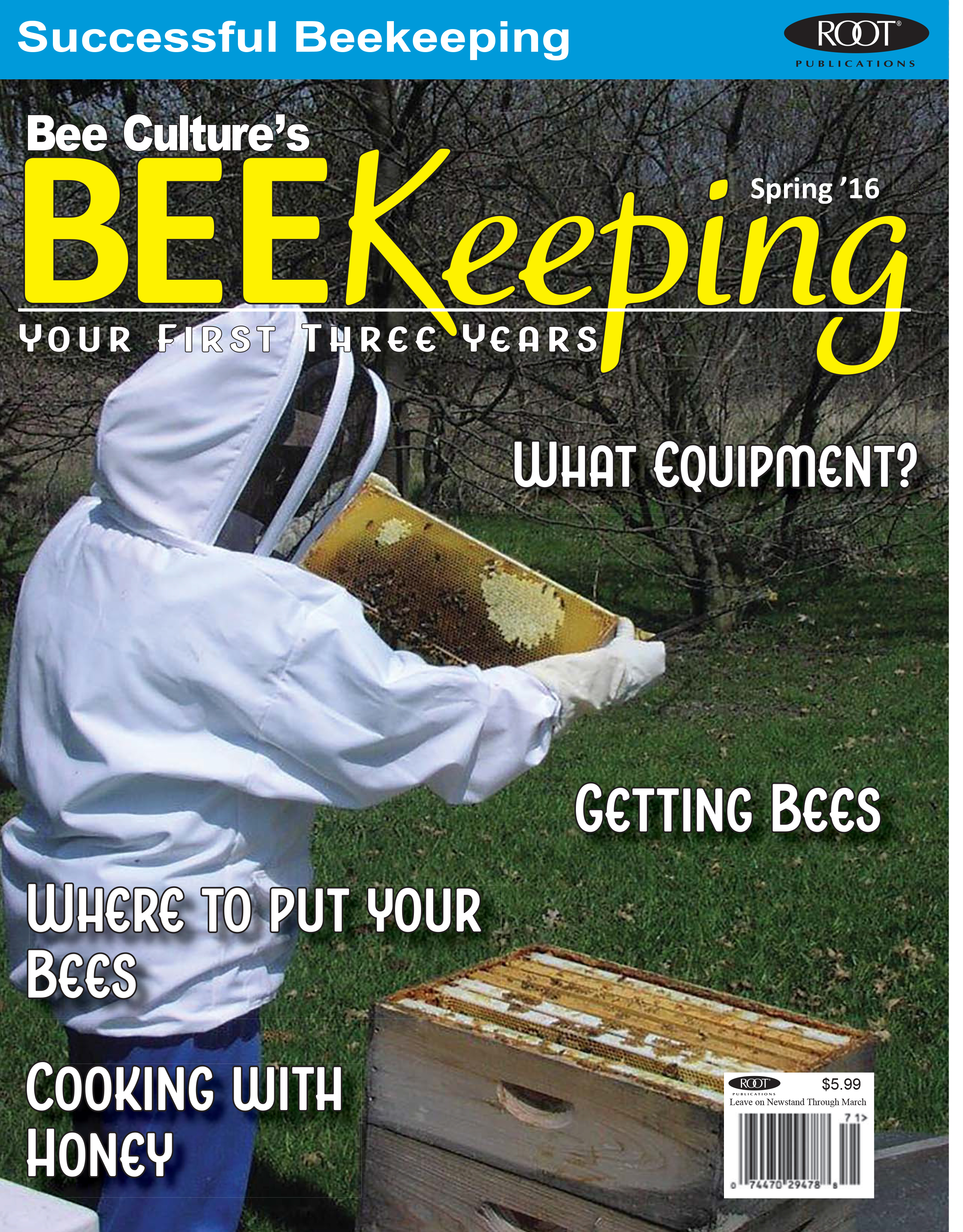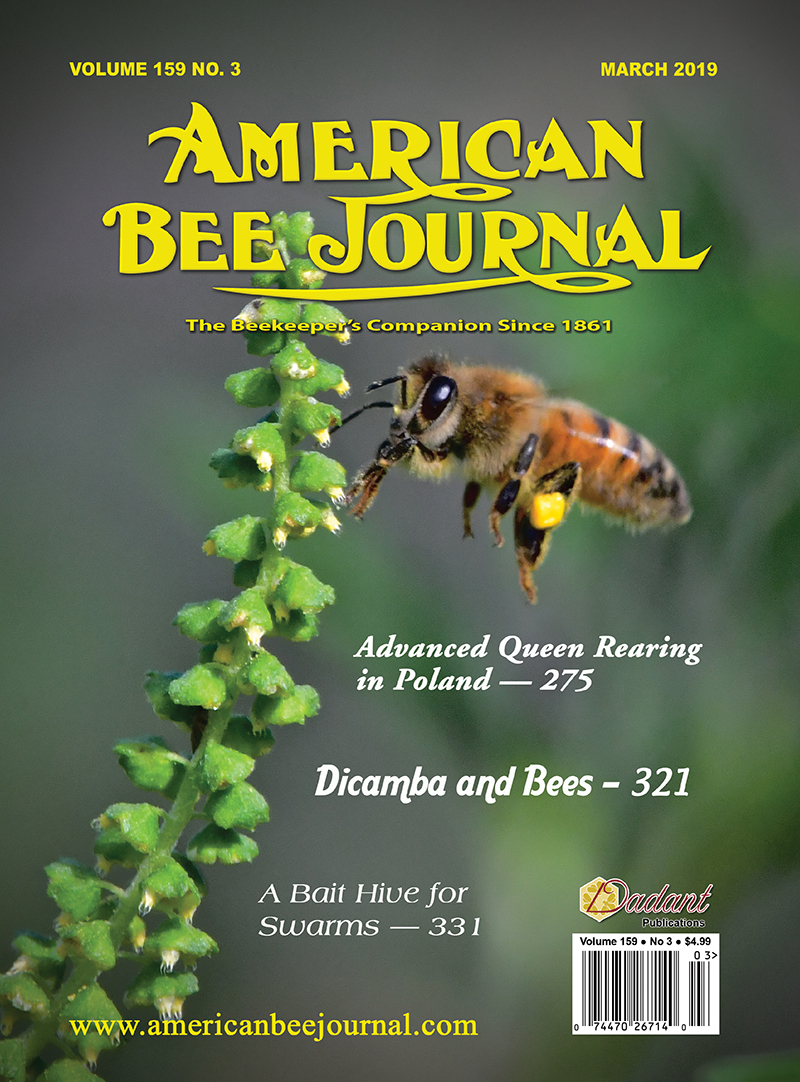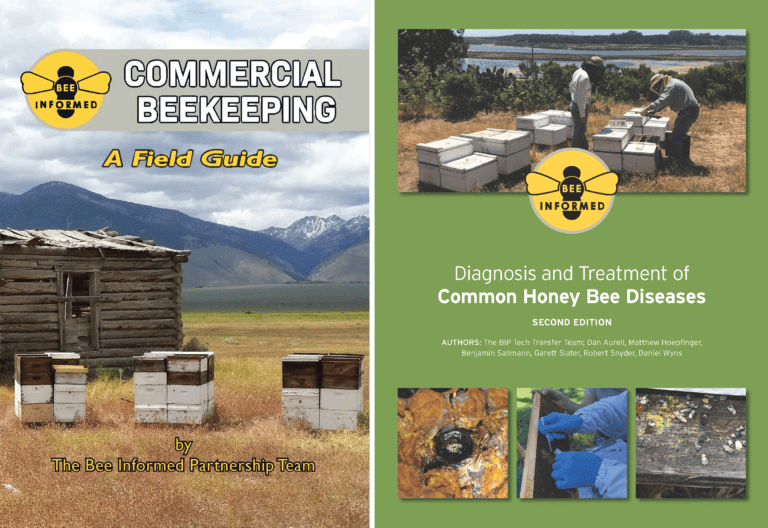Contents
- I. Introduction to Beekeeping Publications and Journals
- II. Importance of Beekeeping Publications and Journals for Beekeepers
- III. Top Beekeeping Publications and Journals: A Comprehensive List
- IV. How to Choose the Right Beekeeping Publication or Journal
- V. Benefits of Subscribing to Beekeeping Publications and Journals
- VI. Frequently Asked Questions about Beekeeping Publications and Journals
- 1. Why is it important to read beekeeping publications?
- 2. Are there different types of beekeeping publications available?
- 3. How can I choose the right publication or journal for me?
- 4. Can I access these publications online?
- 5. Are there any benefits to subscribing to a print edition rather than just reading online?
- 6. How often are these publications released?
- 7. Can I contribute my own articles or research to these publications?
- 8. Do beekeeping publications offer advertising opportunities?
- 9. Are there any forums or discussion platforms associated with these publications?
- 10. Can I access archived articles from previous issues of these publications?
I. Introduction to Beekeeping Publications and Journals

Beekeeping is an ancient practice that has gained significant popularity in recent years due to the environmental benefits and the delicious honey it produces. Whether you are a novice beekeeper or an experienced apiarist, staying updated with the latest trends, techniques, and research is crucial for success in this field. This is where beekeeping publications and journals play a vital role.
Beekeeping publications and journals are valuable resources that provide comprehensive information on various aspects of beekeeping. They cover topics such as hive management, honey production, disease prevention, queen rearing techniques, and much more. These publications serve as a bridge between experts in the industry and aspiring beekeepers by sharing practical knowledge backed by scientific research.
1) Benefits of Beekeeping Publications
Beekeeping publications offer numerous benefits to both beginners and seasoned professionals:
- Education: These resources provide educational content that helps individuals develop a better understanding of bees’ behavior, their needs throughout different seasons, hive maintenance tips, pest control methods, etc.
- Inspiration: Reading about successful stories from experienced beekeepers can inspire newcomers to take up this rewarding hobby or motivate seasoned apiarists to try innovative approaches.
- Networking Opportunities: Many publications include sections dedicated to connecting like-minded individuals who can share experiences or seek advice from fellow enthusiasts around the world.
- Solution-Oriented Approach: The articles often address common challenges faced by beekeepers while providing effective solutions based on practical experiences or scientific studies.
2) Importance of Beekeeping Journals
Beekeeping journals focus primarily on sharing cutting-edge research and scientific studies related to bees and their management. These journals are usually peer-reviewed, ensuring that the content is reliable and accurate. They serve as a platform for researchers, scientists, and scholars to publish their findings on various topics such as bee health, genetics, pollination patterns, sustainable practices, and more.
The information UPDATED in these journals helps advance our understanding of bees while providing valuable insights into enhancing beekeeping practices. It allows beekeepers to stay updated with the latest discoveries in the field and adapt their methods accordingly.
Conclusion
Beekeeping publications and journals are indispensable resources for anyone involved in or interested in beekeeping. They offer a wealth of knowledge ranging from practical tips to cutting-edge research findings. By regularly reading these publications, you can expand your knowledge base, improve your beekeeping skills, stay informed about industry trends, and contribute to the sustainability of honeybee populations worldwide.
II. Importance of Beekeeping Publications and Journals for Beekeepers

Beekeeping publications and journals serve as invaluable resources for beekeepers, providing them with a wealth of information, guidance, and inspiration. These publications play a crucial role in promoting the growth and development of beekeeping communities worldwide.
1. Keeping Up with the Latest Trends
The field of beekeeping is constantly evolving, with new techniques, research findings, and industry trends emerging regularly. By subscribing to reputable publications and journals dedicated to beekeeping, beekeepers can stay informed about the latest advancements in their field. These publications cover topics such as hive management practices, disease prevention strategies, honey production tips, pollination methods, and much more.
2. Learning from Expert Advice
Beekeeping publications often feature articles written by experienced professionals who have spent years honing their expertise in the industry. These experts share their knowledge through insightful articles that offer practical advice on various aspects of beekeeping. Whether it’s troubleshooting common issues or implementing innovative methods to enhance honey yield or colony health – these expert insights are valuable resources for both beginner and seasoned beekeepers.
3. Networking Opportunities
Beekeeping publications also provide opportunities for networking within the community by featuring interviews with successful apiarists or profiles of local associations or clubs involved in apiculture activities. Through these stories shared within these journals’ pages, readers can connect with fellow enthusiasts who may be facing similar challenges or pursuing similar goals.
4. Research Collaboration
Apart from being sources of knowledge dissemination among practitioners themselves – scientists studying bees also rely on these publications to share their research findings with a broader audience interested in apiculture-related topics or contributing observations from different regions around the world.
5. Inspiring Innovation
Beekeeping publications and journals often highlight stories of innovation, featuring beekeepers who have developed unique solutions to common problems or pioneered new techniques for hive management. These success stories not only inspire others within the community but also encourage experimentation and progress in the field of beekeeping.
III. Top Beekeeping Publications and Journals: A Comprehensive List

Beekeeping enthusiasts and professionals alike are always on the lookout for reliable sources of information to stay updated on the latest trends, techniques, and research in the field. If you’re passionate about beekeeping or looking to expand your knowledge, here is a comprehensive list of top beekeeping publications and journals that will provide you with valuable insights:
1. The American Bee Journal
The American Bee Journal is one of the oldest and most respected publications in the beekeeping world. It covers a wide range of topics, including hive management, honey production, disease prevention, and more. With contributions from experienced beekeepers worldwide, this journal offers practical advice for both beginners and seasoned professionals.
2. Bee Culture Magazine
Bee Culture Magazine has been serving as an essential resource for beekeepers since 1873. Filled with informative articles written by experts in the field, it covers various aspects of beekeeping including queen rearing techniques, hive health maintenance strategies, honey extraction methods, pollination practices, and much more.
3. Journal of Apicultural Research
The Journal of Apicultural Research is a scientific publication dedicated to advancing knowledge about bees through research papers from around the globe. This peer-reviewed journal provides valuable insights into topics such as genetics of honeybees; behavior patterns; effects of pesticides; diseases affecting colonies; pollination studies; and sustainable apiculture practices.
4. American Honey Producers Association Newsletter
The American Honey Producers Association (AHPA) Newsletter focuses on relevant issues faced by commercial beekeepers across America. It covers topics like industry news updates, legislative developments affecting apiculture businesses at local or national levels, marketing strategies for honey products, and information on upcoming events and conferences.
5. The Speedy Bee
The Speedy Bee is a quarterly publication that primarily caters to backyard beekeepers and hobbyists. It offers simple yet informative articles on hive management, swarm prevention, honey extraction techniques, and creative ways to use beeswax. This magazine also includes stories from fellow beekeepers, making it an engaging read for anyone passionate about beekeeping.
These publications and journals are just a few examples of the vast array of resources available to beekeeping enthusiasts. Whether you’re a beginner or an experienced apiarist, exploring these sources will keep you informed about the latest trends in apiculture practices while providing valuable insights into the fascinating world of bees.
IV. How to Choose the Right Beekeeping Publication or Journal

Choosing the right beekeeping publication or journal is crucial for staying informed about the latest trends, research, and best practices in the field. With so many options available, it can be overwhelming to determine which one will provide you with the most relevant and reliable information. To help you make an informed decision, consider the following factors:
1. Content Relevance
Look for publications or journals that cover topics directly related to your specific interests and needs as a beekeeper. Whether you are a beginner or an experienced professional, it’s important to find content that matches your level of expertise.
2. Credibility and Reputation
Evaluate the credibility of each publication or journal by researching its reputation within the beekeeping community. Check if they have reputable authors, peer-reviewed articles, and affiliations with well-known organizations in the industry.
3. Frequency of Publication
Determine how often each publication is released and whether it aligns with your desired frequency of receiving new information. Some publications come out monthly, while others may be quarterly or even annual.
4. Practical Tips and Advice
A good beekeeping publication should offer practical tips and advice that can help you improve your skills as a beekeeper. Look for articles that provide step-by-step instructions on various aspects of hive management, pest control techniques, honey extraction methods, etc.
5. Research-Based Articles
If you are interested in staying up-to-date with scientific advancements in beekeeping research, choose publications that publish peer-reviewed articles written by experts in the field. These articles will provide valuable insights into emerging trends and innovative practices.
6. Community Engagement
Consider whether the publication or journal encourages community engagement and offers opportunities for readers to connect with other beekeepers. This could include forums, online communities, or events where you can exchange knowledge and experiences.
7. Cost and Accessibility
Weigh the cost of subscribing to each publication against your budget. Some publications may offer both print and digital versions, so consider which format suits your preferences best. Additionally, check if back issues are accessible online in case you need to refer back to previous articles.
By considering these factors when choosing a beekeeping publication or journal, you can ensure that you stay well-informed about the latest developments in this fascinating field. Remember that finding the right source of information is key to becoming a successful beekeeper!
V. Benefits of Subscribing to Beekeeping Publications and Journals
Subscribing to beekeeping publications and journals can provide a wealth of benefits for both novice and experienced beekeepers. These valuable resources offer a platform for knowledge-sharing, keeping enthusiasts up-to-date with the latest trends, research, and techniques in the world of beekeeping.
1. Stay Informed about Best Practices
Beekeeping is a dynamic field that constantly evolves with new discoveries and advancements. By subscribing to reputable publications, you gain access to expert insights on best practices for hive management, disease prevention, honey production techniques, and more. Staying informed through these publications helps you maintain healthy colonies while maximizing your yields.
2. Learn from Experienced Beekeepers
Beekeeping publications often feature articles written by experienced beekeepers who generously share their knowledge and expertise gained over years of hands-on experience. These personal anecdotes provide invaluable insights into practical aspects of beekeeping that may not be found in textbooks or online resources alone.
3. Discover New Tools and Equipment
Beekeeping journals frequently showcase innovative tools, equipment recommendations, and product reviews that can enhance your beekeeping journey. Through these publications’ comprehensive evaluations and comparisons, you can make informed decisions when investing in new gear or upgrading your existing equipment.
4. Explore Sustainable Practices
In recent years, sustainable beekeeping practices have gained significant attention due to environmental concerns affecting pollinators worldwide. Beekeeping magazines often highlight eco-friendly approaches such as organic pest control methods or natural hive management strategies that minimize negative impacts on bees’ health while promoting biodiversity preservation.
5. Network with Fellow Beekeepers
Beekeeper associations often publish newsletters or magazines where members can contribute articles, share experiences, and connect with fellow enthusiasts. Subscribing to these publications gives you the opportunity to become part of a thriving community where you can exchange ideas, seek advice, and participate in local events or workshops.
6. Access Research Findings
Beekeeping publications are a valuable source of scientific research findings related to honeybees and their ecosystems. These journals often publish peer-reviewed studies on topics like bee diseases, pollination patterns, or the impact of pesticides on bee health. Keeping up with such research helps you make informed decisions based on evidence-backed information.
By subscribing to beekeeping publications and journals, you’ll gain access to a wealth of knowledge that empowers you as a beekeeper. These resources not only educate but also inspire innovation and foster connections within the vibrant beekeeping community.
VI. Frequently Asked Questions about Beekeeping Publications and Journals
1. Why is it important to read beekeeping publications?
Beekeeping publications provide valuable information on various aspects of beekeeping, including hive management, pest control, honey production, and more. By reading these publications, beekeepers can stay updated with the latest industry trends and best practices to ensure the health and productivity of their colonies.
2. Are there different types of beekeeping publications available?
Yes, there are various types of beekeeping publications catering to different interests and expertise levels. You can find beginner-friendly magazines that cover basic topics for novice beekeepers as well as advanced journals that delve into scientific research and in-depth techniques for experienced apiarists.
3. How can I choose the right publication or journal for me?
The choice depends on your level of experience and specific interests within the field of beekeeping. If you’re a beginner, start with magazines that offer practical tips and step-by-step guides. For those seeking more comprehensive knowledge or conducting research in apiculture, specialized scientific journals may be more suitable.
4. Can I access these publications online?
Absolutely! Many publishers now offer digital versions of their magazines or journals which can be accessed through websites or mobile apps. This allows easy access to a wide range of articles anytime and anywhere without having to carry physical copies.
5. Are there any benefits to subscribing to a print edition rather than just reading online?
Sure! Subscribing to a print edition offers certain advantages like receiving physical copies delivered directly to your doorstep on a regular basis – no need for an internet connection or device battery life concerns during reading sessions!
6. How often are these publications released?
The frequency of publication varies depending on the specific magazine or journal. Some may be UPDATED monthly, bimonthly, quarterly, or even biannually. It’s best to check with the publisher or visit their website for accurate information on release schedules.
7. Can I contribute my own articles or research to these publications?
Absolutely! Many beekeeping publications welcome contributions from readers and experts in the field. If you have valuable insights, experiences, or research findings to share, you can reach out to the editorial team and inquire about submission guidelines.
8. Do beekeeping publications offer advertising opportunities?
Yes! Beekeeping magazines and journals often provide advertising spaces for businesses offering products or services related to apiculture. This allows companies in the industry to promote their offerings directly to a targeted audience of beekeepers.
9. Are there any forums or discussion platforms associated with these publications?
Absolutely! Many beekeeping publications have online forums or discussion platforms where readers can engage with fellow enthusiasts, ask questions, seek advice, and share experiences related to beekeeping. These platforms provide an excellent opportunity for learning from a community of like-minded individuals.
10. Can I access archived articles from previous issues of these publications?
In most cases, yes! Many publishers maintain digital archives that allow access to past issues and articles even if they are no longer available in print form. This enables readers to explore a wealth of knowledge accumulated over time within the realm of apiculture.

Andrew Boyer is an accomplished individual with a deep-rooted passion for bees and their conservation. Born and raised in a small town in Oregon, Andrew developed an early fascination with nature and the environment. He pursued his education at the prestigious University of Oregon, where he obtained a Bachelor’s degree in Environmental Science with a specialization in Entomology. During his time at university, Andrew conducted extensive research on the behavior and ecological impact of bees, earning him recognition from his peers and professors. His dedication to the field led him to internships at local beekeeping associations, where he honed his skills in hive management and honey production. Andrew’s expertise in beekeeping and his commitment to environmental sustainability make him a valuable asset in the conservation of these vital pollinators.
